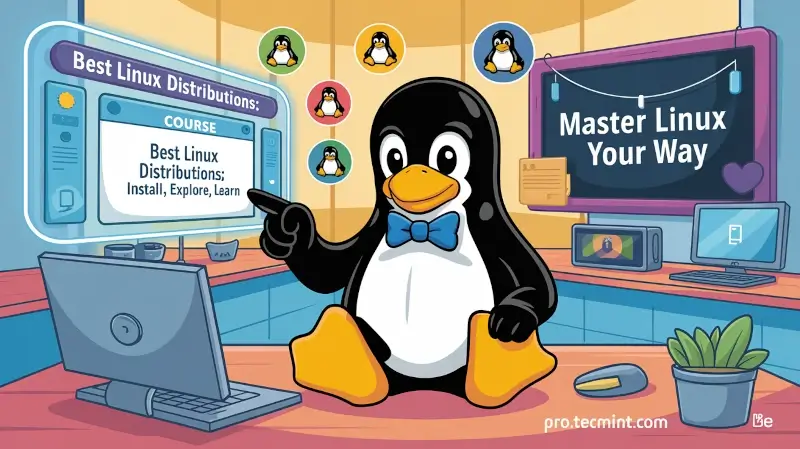11 Best Linux Distributions You Should Try

In this course, we’ll check out the best Linux distributions, learn how to install them safely, and get comfortable using their main features.
Each chapter focuses on one distro, showing you how to install it, set it up, and use it, so you can try things out confidently, even if it’s your first time with Linux.
What You’ll Learn
By the end of this course, you’ll be able to:
- Know what makes each Linux distro unique and when to use it.
- Install and set up each distro, either on a virtual machine or a real computer.
- Use Linux desktops, manage software, and handle basic system tools with confidence.
Whether you want speed, simplicity, customization, or power, you’ll be able to pick the Linux distro that’s right for you and get it running smoothly.
Course Prerequisites
You don’t need any Linux experience to get started. All you need is:
- Basic computer skills (if you can install apps on Windows or macOS, you’re good to go!).
- A working PC or laptop (4 GB RAM or more is best if you’re using a virtual machine).
- A willingness to explore, experiment, and learn by doing.
Why So Many Distros?
If you’ve ever searched for “best Linux distro for beginners”, you know it can be confusing. Ubuntu, Linux Mint, Zorin OS, Pop!_OS, Fedora… there are so many!
The thing is, Linux isn’t one-size-fits-all, and that’s a good thing, because each distro has its own style:
- Some focus on privacy and simplicity.
- Others give you a polished, ready-to-go experience.
- A few work really well on older or low-spec computers.
- And some are perfect if you want to learn more advanced Linux skills.
By the end of this course, you won’t just know how to use Linux, you’ll know which Linux is right for you.
Get ready to try out different Linux systems that are easy to use, fast, and interesting, each with its own little quirks and surprises, so roll up your sleeves and have fun with Linux!